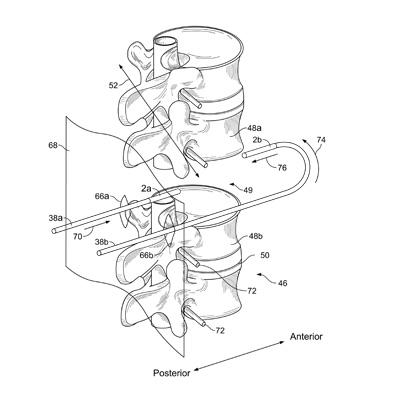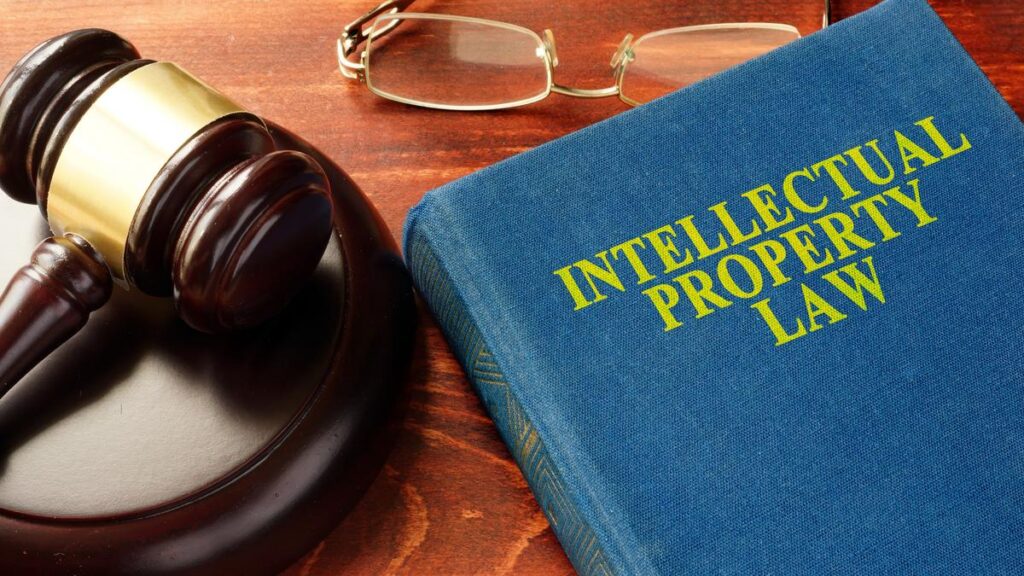In today's digital age, the significance of intellectual property (IP) has reached unprecedented heights. A study by the World Intellectual Property Organization reveals that, as of 2017, global IP filing activity rose by 5.2% for patents and 8.3% for trademarks, underscoring the burgeoning value of IP in the international arena.
While creation is the bedrock of innovation, it's equally imperative to shield these creations from unauthorized use. This is where intellectual property rights step in, offering protection to the fruits of human ingenuity. These rights safeguard creators' interests and encourage them to produce and innovate without the fear of plagiarizing their work.
However, in the fervor to share one's creation with the world, it's easy to overlook the importance of protection. It's a delicate balance – sharing versus shielding. On one hand, creators aspire to reach a global audience, spreading their innovations far and wide. On the other, the looming threat of infringement or theft mandates the need for protective measures. It's this equilibrium that every innovator, artist, or entrepreneur must strive for, ensuring their hard work reaps its rightful rewards.
To truly understand the magnitude and nuances of IP, one must dive into its varied facets, from copyrights to patents, from the realm of the digital to the tangible. The journey ahead aims to guide creators through this intricate landscape, empowering them to make informed decisions about their intellectual assets.
Basics of Intellectual Property (IP)
The Intellectual Property (IP) world is vast and varied, touching numerous facets of our daily lives, from the brands we love to the innovations we use. In its essence, IP represents creations of the mind, offering creators a legal framework to protect their innovations and works.

Defining the Types of IP
- Copyright: Pertains to artistic and literary works. Think novels, films, music, and even software. Copyright provides the creator exclusive rights over their creation's reproduction, distribution, and display.
- Trademarks protect symbols, names, and slogans used to recognize goods and services. Brands like Apple, Nike, and McDonald's have trademarks that are recognized worldwide.
- Patents: A patent grants inventors exclusive rights over their inventions for a limited period, generally 20 years. This means no one else can produce, sell, or use the invention during that duration without the inventor's consent.
- Trade Secrets: These are practices, designs, formulas, processes, or any information that gives a business advantage over competitors who don’t know or use it. The formula for Coca-Cola is one of the most famous trade secrets.
IP's core strength lies in its empowerment of its holders. Whether you're an author, entrepreneur, or an inventor, IP rights offer the peace of mind to share, sell, or license your work, knowing well that it remains protected against unauthorized use.
By offering this shield, IP ensures that innovators reap the rewards of their hard work and imagination, promoting an ecosystem where creativity and innovation thrive. A U.S. Patent and Trademark Office report suggests that IP-intensive industries significantly contribute to GDP and employment, underlining the profound economic impact of robust IP systems.
Copyright: The Shield for Creative Works
Imagine pouring your heart and soul into a piece of artwork, music, or literature, only to find it replicated and sold without your permission. Unsettling, right? Enter copyright. A legal concept that plays a pivotal role in ensuring creators get their due credit.

Understanding Copyright
Copyright is a form of IP protection granted to the creators of original works of authorship, ranging from literary pieces, to dramatic, musical, and certain other intellective works. Once a work is copyrighted, others cannot reproduce, distribute, or perform the work without the copyright holder's authorization.
Scope of Copyright Protection
The protective embrace of copyright extends to a wide array of works. This includes:
- Books, articles, and other literary pieces.
- Music and accompanying lyrics.
- Films, radio, and television broadcasts.
- Artistic works such as paintings, photographs, and sculptures.
- Databases and computer programs.
Duration and Depth of Protection
Copyright protection isn't infinite. Typically, it lasts for the life of the creator plus 70 years, though this can vary depending on the nature of the work and jurisdiction. After this period, the work enters the public domain, meaning it's free for all to use.
Embarking on the Registration Journey
While copyright protection is automatic upon the creation of an original work, registering it offers an added layer of protection, especially when dealing with infringement cases. The process involves submitting your work to a copyright office, like the U.S. Copyright Office, alongside a fee. Registration provides a public record of your copyright and is often essential when seeking statutory damages and attorney's fees in litigation.
Trademarks: Protecting Your Brand Identity
In today's bustling market, establishing a distinct identity is crucial. It's more than just a name or a logo; it's about creating a recognizable brand. This is where trademarks come into play, offering protection against brand imitation and unauthorized use.

What is a Trademark?
A trademark is a unique sign capable of distinguishing the goods or services of one enterprise from those of other enterprises. It can be a word, phrase, symbol, design, or a combination of these, used to identify and distinguish a company's products or services from those of its competitors.
Setting Foot on the Trademark Registration Path
Registering a trademark gives the holder exclusive rights to use it on their products or services. The process usually involves:
- Completing an application includes the name/logo you want to trademark, the goods/services it will be used for, and an image of the trademark.
- Paying the applicable fees.
- Waiting for the examination of the application by the trademark office.
The Crucial Trademark Search
Before diving into registration, it's vital to conduct a trademark search. This step ensures that your desired trademark isn't already in use or too similar to existing ones, preventing potential disputes and rebranding headaches down the road.
Guarding and Renewing Your Trademark
Once registered, it's essential to use and protect your trademark actively, ensuring no unauthorized party uses it. Over time, to maintain its protective shield, trademarks need to be renewed, generally every ten years, with continuous proof of use.
Patents: Safeguarding Your Innovations
Having a groundbreaking idea is only part of the journey in the world of inventions and innovations. The next vital step? Protecting that idea from imitations and unauthorized reproductions. Enter the realm of patents – the shield every inventor needs.

What are Patents?
A patent is a legal tool that grants the holder exclusive rights to an invention for a specified period, typically 20 years. This means no one else can make, use, sell, or distribute the patented invention without permission.
Diving into Types of Patents
Not all inventions are the same, and thus, patents are categorized accordingly:
- Utility Patents: Awarded for new and useful processes, machines, compositions of matter, or any new and useful improvement thereof.
- Design Patents: For inventors of a new, original, and ornamental design for an article of manufacture.
- Plant Patents: Granted to those who invent or discover and asexually reproduce distinct and new varieties of plants.
The Journey of Patent Acquisition
Securing a patent isn't instantaneous. It involves:
- Conducting a preliminary patent search to ensure no existing patents match your invention.
- Filing a patent application with detailed descriptions, drawings, and claims of the invention.
- Navigating through the examination process where patent examiners assess the application's viability.
The Centrality of Patent Protection
Patent protection is pivotal for inventors as it prevents others from capitalizing on their hard work and innovation. It provides a safety net, ensuring the original creator has the exclusive right to profit from their invention, fostering an environment where creativity and innovation can thrive.
Trade Secrets: Guarding Your Business's Confidential Information
In the business realm, there's a treasure trove more valuable than gold – information. Trade secrets encompass confidential information that gives a business its competitive edge.

Diving Into Trade Secrets
Unlike patents or copyrights, trade secrets don't protect an idea but rather information. This includes processes, methods, strategies, or any valuable information because it's not publicly known.
What Qualifies as a Trade Secret?
The exact nature of trade secrets can vary, but they often encompass:
- Manufacturing or industrial secrets.
- Commercial secrets, like customer lists or advertising strategies.
- Program algorithms or unique software solutions.
Fortifying Your Trade Secrets
A registration doesn't grant protection; it's about maintaining the secret. Measures include:
- Using non-disclosure agreements (NDAs) with employees and partners.
- Restricting access to the information both physically and digitally.
- Regularly reviewing and updating security measures.
A trade secret remains one as long as it stays secret. Once disclosed, its protection can be lost forever. Hence, vigilance is paramount.
Digital Content and Intellectual Property
The digital age brought forth a plethora of innovative content, but with it, the quandary of safeguarding these creations emerged. With mere clicks, creations can be replicated and disseminated, raising the stakes for protecting digital artistry.

The Daunting Task of Protecting Digital Artistry
While the tangible nature of traditional works made them somewhat easier to protect, digital content, with its intangible nature, poses a unique set of challenges. From eBooks to software, creations are susceptible to unauthorized replication and distribution.
Digital Rights Management (DRM): A Shield in Cyberspace
DRM technologies play a pivotal role in combating unauthorized access and distribution. They work by imposing restrictions, ensuring only authorized users can access or modify the content. Think of it as a virtual bouncer, ensuring that your digital content isn't gatecrashed.
Open Source vs. Proprietary Software: A Delicate Balance
Open source software, characterized by its freely accessible and modifiable nature, starkly contrasts proprietary software. While open source champions collaboration, proprietary software emphasizes exclusivity. Both have their merits, but the choice impacts how IP rights are managed and protected.
While digital innovation flourishes, the necessity to shield one's intellectual toil becomes even more pronounced. As creators navigate this intricate landscape, awareness and informed decisions can spell the difference between safeguarded success and potential pitfalls.
Legal Agreements to Safeguard Your Intellectual Property
Your innovative creations are your most valuable assets in today's fast-paced digital age. As such, solidifying their protection through legal agreements is not just wise but imperative.

The Backbone of IP Protection: Contracts and Agreements
Contracts serve as the bedrock for securing one's intellectual property. They lay out clear terms, ensuring all involved parties understand their rights and obligations.
Non-disclosure Agreements (NDAs)
Before you spill the beans about your next big idea, NDAs come to the rescue. These agreements ensure that the recipient of confidential information doesn't disclose or misuse it, safeguarding your intellectual secrets.
Licensing Agreements
Licensing allows others to use your IP while you retain ownership. It's like renting out your property, ensuring you reap benefits while maintaining control.
Employee and Contractor Agreements
Employees and contractors can be instrumental in the creation process. Agreements with them confirm their understanding that innovations made during their tenure belong to the business, not to them personally.
At the crux, the legal realm offers a robust toolkit to shield your intellectual endeavors. Tapping into these tools ensures that your creations remain solely yours, even as they reach wider audiences.
International Considerations: Protecting IP Across Borders
While your ingenious creation may have been birthed in one country, its potential audience and market span the globe. As a result, it's crucial to understand how intellectual property (IP) protections vary from one nation to another.
The Landscape of Global IP Protection
Just as languages and cultures differ, so do approaches to IP protection. While one country might have stringent copyright protections, another might lean towards lax regulations. Hence, securing your IP rights internationally can often resemble a game of 3D chess.
Major International IP Treaties and Agreements
International treaties such as the Berne Convention and the TRIPS Agreement were instituted to bring a semblance of standardization. These treaties, among others, aim to ensure that creations are protected across member countries, albeit with country-specific nuances.
The Intricacies of Enforcing IP Rights Internationally
Even with treaties in place, enforcement remains a challenge. Navigating the legal systems of multiple countries, each with its unique interpretation of IP rights can be daunting. Yet, it's a necessary ordeal, ensuring that your hard work and innovation aren't taken advantage of in foreign lands.
While the digital age has made global reach easier than ever, it has also highlighted the importance of understanding and actively protecting our intellectual properties across borders.
The Cost of Negligence: Consequences of Not Protecting Your IP
Every creator's worst nightmare is witnessing their brainchild exploited without any credit or compensation. When you neglect the protection of your Intellectual Property (IP), it's not just an idea or a brand at risk; it's the heart of your innovation.

Financial Implications
Without IP protection, potential revenue can seep through the cracks. Unlicensed uses, counterfeits, or plain theft can redirect the financial rewards elsewhere. Additionally, legal battles to reclaim rights can be expensive, draining resources that could be invested elsewhere.
Loss of Brand Trust and Recognition
When your innovations are duplicated without repercussions, distinguishing the authentic from the imitation becomes challenging. This blurring can erode your brand's trust, loyalty, and recognition in the market. Over time, this erosion can be more damaging than a one-time financial loss.
Real-World Cases of IP Infringements
Take the case of Apple and Samsung's infamous patent war. Their battles over design and patent infringements spanned continents and courts, costing millions in legal fees. Another instance is the music industry, where artists frequently grapple with unauthorized reproductions, losing potential royalty income.
Failing to safeguard your IP isn't just about potential monetary loss; it's about jeopardizing the essence of your brand and creation.
Staying Updated: The Dynamic Landscape of IP Laws
As with many facets of our globalized world, the Intellectual Property (IP) realm is in constant flux. With technological advancements and a rapidly changing global market, IP laws often undergo revisions, adjustments, and sometimes complete overhauls. But why is it essential for creators, innovators, and businesses to keep a finger on the pulse of these changes?

Why It’s Crucial to Stay Updated
Shifts in legislation can significantly impact the value of IP assets. Missing a new regulation or misinterpreting a change can lead to inadvertent violations, loss of protection, or diminished rights. Staying updated ensures maximum protection and the ability to fully capitalize on your IP assets.
Resources and Organizations Dedicated to IP Education and News
Fortunately, numerous organizations and platforms are dedicated to providing timely updates on IP laws. The World Intellectual Property Organization (WIPO) is a primary global source. Like the USPTO, national patent and trademark offices also provide valuable insights specific to regions. Moreover, IP law firms, blogs, and journals are invaluable resources for in-depth analyses and the latest developments.
Just as one wouldn't use an outdated map to navigate a changing landscape, relying on old knowledge in the dynamic world of IP can lead to pitfalls. Regularly updating one's understanding is not just beneficial; it's imperative.
Conclusion
Throughout our journey into the intricate Intellectual Property (IP) world, one truth has stood out prominently: the indelible bond between creation and protection. As creators, innovators, and business minds, producing something novel is only half the journey. The other half lies in safeguarding that creation, ensuring its longevity, and maximizing its potential value.
The dance between creation and protection is a delicate one. While the exhilaration of crafting something unique is unmatched, the prudence of guarding it is equally crucial. After all, what use is a masterpiece if it's left exposed to the elements or potential pilferers?
But beyond the practicalities, recognizing and prioritizing IP protection is a testament to the creator's responsibility. It speaks of a vision beyond the immediate and looking toward legacy, impact, and sustainable success. Every brush stroke, every written word, every innovation has value. And it's upon us, the creators of these wonders, to ensure that this value is recognized, respected, and revered.
Let's not see IP protection as a mere legal formality but as an emblem of our commitment to our creations. Let's wear it as a badge of honor, responsibility, and foresight.










